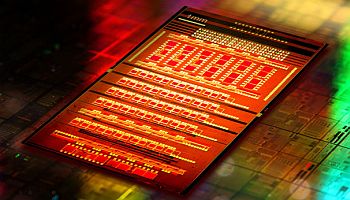New Semiconductor Slides In To Offer Power Savings

Molybdenite is throwing up lower-energy chip possibilities, according to Swiss researchers
Molybdenum disulphide (MoS2), commonly called molybdenite and mainly used as a lubricant in industrial applications, can be used as a substitute for silicon-based substrates in electronic components such as transistors, microprocessors, light-emitting diodes and solar cells. It also looks promisingly likely to use 100,000 times less energy.
The discovery could have an important effect on current developments in photonic chip research which is always on the lookout for innovative improvements in chip design elements.
A Near-perfect Band Gap

If research at Switzerland’s Ecole Polytechnique Federale de Lausanne (EPFL) continues successfully, the fairly commonplace compound could replace the current heir to silicon’s throne, graphene. The advantage of molybdenite is that it works well when spread thinly, a third of the thickness of silicon.
“In a 0.65-nanometer-thick sheet of MoS2, the electrons can move around as easily as in a two-nanometer-thick sheet of silicon,” explained Andras Kis, a professor steering the research. “But it’s not currently possible to fabricate a sheet of silicon as thin as a monolayer sheet of MoS2.”
It also has a property vital for transistor circuits that graphene lacks. Molybdenite naturally possesses a band gap which stops power leaking through. These gaps are non-existent in graphene and require an extra process to create them. The gap is also 1.8 electron volts, a near-optimum energy difference for turning transistors off and on.
At the end of last year, IBM researcher Yu-Ming Lin said that graphene would never replace silicon but would find a use to improve its characteristics. Molybdenite is a relatively common compound, though not as freely available as silicon, and may be a suitable and more efficient substitute.
The search for new and better semiconductive materials is a constant preoccupation for researchers. Working at the nanoscale level means that compounds with well-researched properties can show amazing abilities that were previously not observed.
The work at EPFL is in its early stages but will attract attention from IBM , Intel and others as more is known about the new applications of molybdenite.